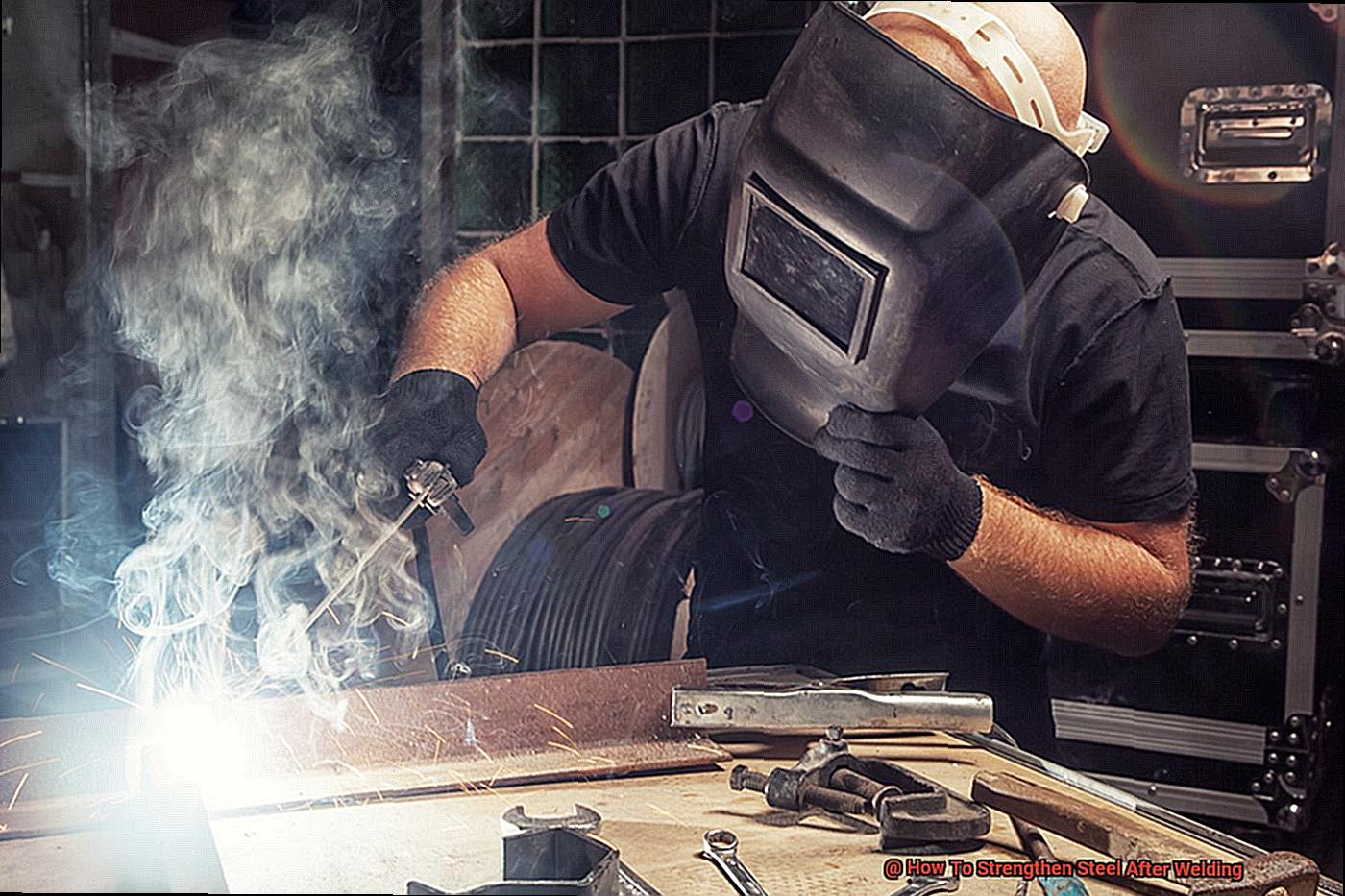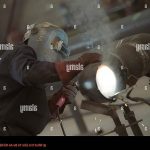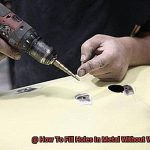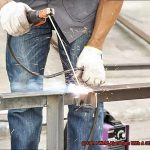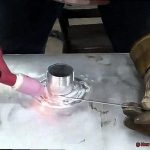Are you tired of welds that buckle under pressure and leave your steel structures weak and unreliable? Do you want to fortify your welded joints and boost the overall strength of your steel constructions? Look no further as we explore the various methods on how to strengthen steel after welding.
Welding is a vital process in construction and manufacturing, but it can weaken the original strength of the metal. Luckily, there are ways to reinforce the welds and bolster the structure’s durability.
This blog post is your ultimate guide to enhancing your welded steel structures. We will delve into various techniques and additives that you can use to strengthen your structures. Firstly, we’ll look at heat treatment – a process of heating and cooling metal to improve its mechanical properties. Next, we will explore post-weld heat treatment which provides additional reinforcement to welded joints. We will also touch on techniques such as shot peening – a method that strengthens the surface of metal – and using carbon fiber reinforcements.
Our team of experts has compiled this comprehensive guide to equip you with all the necessary knowledge and tools needed for strong, durable, and reliable welded steel structures. Follow these expert tips, and you’ll have peace of mind knowing that your steel constructions can withstand even the harshest conditions. So let’s get started.
Cooling Time: How Long Should You Allow for Cooling?
Contents
- 1 Cooling Time: How Long Should You Allow for Cooling?
- 2 Heat Treatment: What Is Heat Treatment and How Does It Strengthen Steel?
- 3 Post-Welding Treatment: What Is Shot Peening and How Does It Help?
- 4 The Benefits of Strengthening Steel After Welding
- 5 Tips for Strengthening Steel After Welding
- 6 Common Mistakes to Avoid When Strengthening Steel After Welding
- 7 Conclusion
Cooling time is a crucial step in strengthening steel after welding. It refers to the amount of time required for the welded metal to cool down to room temperature after welding. If the metal is not allowed to cool down properly, it can lead to a weakened structure and even cause the metal to crack.
So, how long should you allow for cooling? Well, it depends on several factors such as the thickness and type of metal, the welding process used, and the ambient temperature.
Firstly, let’s consider the thickness of the metal. Thicker metals require longer cooling times than thinner metals. For example, a piece of 1/4 inch-thick steel may only require a few minutes of cooling time, while a piece of 1-inch-thick steel may require several hours of cooling time. Therefore, it’s crucial to be patient and allow enough time for thicker metals to cool down properly.
Secondly, the type of welding process used also affects cooling time. TIG and MIG welding typically require shorter cooling times compared to processes like stick welding or flux-cored arc welding. This is because TIG and MIG welding produce less heat, which means the metal will cool down faster. So, if you’re using a high-heat process, be sure to allow for more cooling time.
Lastly, you need to consider the ambient temperature when determining cooling time. If you’re welding in an area with high temperatures or high humidity levels, it may take longer for the metal to cool down properly. In such cases, it’s best to allow extra time for cooling or use cooling aids such as fans or water sprays to speed up the process.
In conclusion, allowing sufficient cooling time is critical in strengthening steel after welding. The length of cooling time required depends on several factors such as metal thickness, type of welding process used, and ambient temperature. Taking these factors into account and allowing adequate cooling time will ensure a strong and durable weld.
Don’t rush the cooling process and risk compromising the integrity of your welded joint. By following these tips, you can ensure that your welded joints are strong and durable.
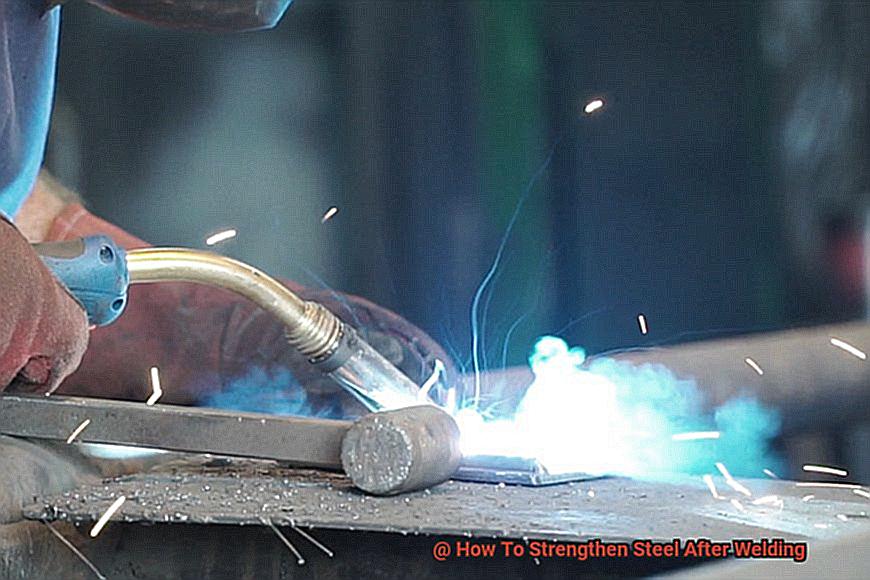
Heat Treatment: What Is Heat Treatment and How Does It Strengthen Steel?
Heat treatment is a process that involves heating steel to a specific temperature, holding it there for a set amount of time, and then rapidly cooling it. This process changes the structure of the steel, making it stronger and more durable. The result is steel that can withstand various conditions and is suitable for a wide range of applications.
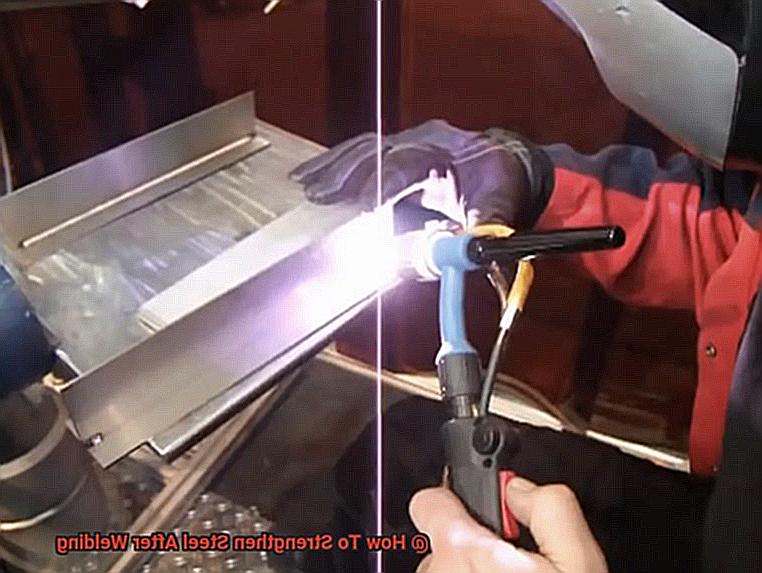
There are several types of heat treatment methods available, each with its unique advantages and applications. Annealing is one such method that involves heating the steel to a high temperature and then slowly cooling it. This process makes the steel softer and more ductile, which is beneficial for certain applications such as forming or shaping.
Normalizing is similar to annealing but involves cooling the steel in air instead of slowly. This process produces a more uniform grain structure in the steel and can help to reduce internal stresses.
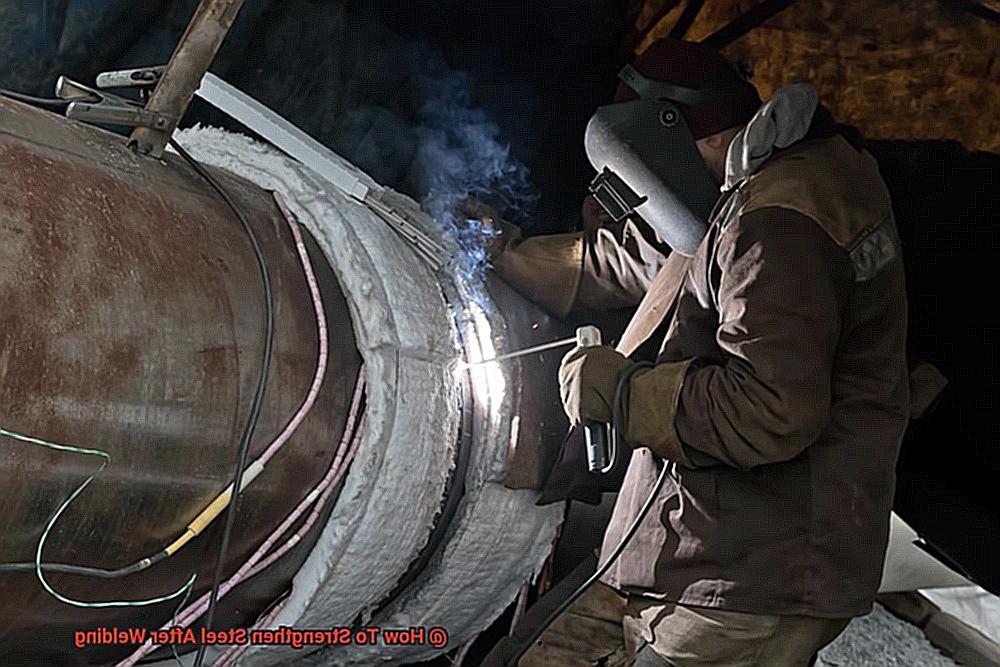
Quenching is another heat treatment method that rapidly cools the steel by immersing it in a liquid such as water or oil. This process hardens the steel but can also make it brittle if not done correctly. Therefore, it’s essential to choose the right quenching medium for your specific application.
Tempering is the final step in the heat treatment process, which involves reheating the steel to a lower temperature than during quenching. This process helps to relieve any remaining internal stresses while improving the toughness of the steel.
The heat treatment process is vital for ensuring that steel is strong and durable enough to withstand various conditions. However, it’s crucial to choose the right type of heat treatment method for your specific application to achieve optimal results.
In conclusion, heat treatment is an essential process for strengthening steel after welding. It improves its strength, durability, and overall performance. With different types of heat treatment methods available, you can choose the right one for your specific application and achieve optimal results.
Post-Welding Treatment: What Is Shot Peening and How Does It Help?
Imagine bombarding the surface of metal with small, high-velocity metal balls or shot. This creates a compressive stress on the surface of the material, which helps to close any existing cracks and prevent new ones from forming. Unlike sandblasting, which removes material from the surface, shot peening actually strengthens it.
But that’s not all – shot peening also improves the fatigue life of welded structures. Fatigue failure occurs when a material is subjected to repeated loading and unloading, causing small cracks to form on the surface. Shot peening helps to prevent fatigue failure by creating a compressive residual stress on the surface of the material, making it more resistant to bending and deformation.
Of course, the effectiveness of shot peening depends on several factors, such as the size and shape of the shot, the intensity and duration of the process, and the type of steel being treated. But in general, shot peening is a highly effective way to strengthen steel after welding.
Keep in mind that shot peening is just one of many post-welding treatments available. Other methods include heat treatment, stress relieving, and surface hardening. The choice of treatment will depend on several factors, including the specific application and desired outcome.
The Benefits of Strengthening Steel After Welding
Welding is a powerful process for creating metal structures that are strong and robust. However, the high temperatures generated during welding can cause the steel to become weakened, ultimately compromising its overall strength and durability. Luckily, there are several techniques that can be used to strengthen steel after welding, which come with some impressive benefits.
One of the most significant advantages of strengthening steel after welding is that it increases the durability and longevity of the welded structure. By making metal more resistant to wear and tear, corrosion, and other environmental factors, it remains strong and functional for a longer period. This not only reduces maintenance costs but also improves safety. Imagine how much better you’ll feel knowing the structure you’re working on will last longer and be safer for all those who use it.
Another benefit of strengthening steel after welding is improved structural integrity. Welding can create weak spots in the metal due to thermal stress, which can compromise its overall strength. By reinforcing these weak spots, overall stability and strength of the structure are improved. This is particularly crucial in applications where safety is a concern, such as in construction or transportation.
Strengthening steel after welding can also improve its resistance to fatigue failure. Fatigue failure occurs when a material fails due to repeated loading and unloading cycles. Strengthening the steel makes it more resistant to these cycles, reducing the risk of fatigue failure and increasing its lifespan. Think about how much money and time you’ll save by not having to replace structures that have failed prematurely due to fatigue.
In addition to these benefits, strengthening steel after welding can also improve its aesthetic appearance. Welding often leaves visible marks on the surface of the metal, which can detract from its appearance. By strengthening the metal, these marks can be minimized or eliminated, resulting in a smoother and more visually appealing finish. Who doesn’t want their metal structures to look their absolute best?
Overall, there are many benefits to strengthening steel after welding. By improving durability, structural integrity, fatigue resistance, and aesthetic appearance, it is possible to create stronger and more reliable welded structures that will last for years to come. So if you want your welded structures to remain sturdy and good-looking for a long time, consider post-welding treatment processes like shot peening or other techniques that will strengthen your metal.
Tips for Strengthening Steel After Welding
Welding is a fascinating process that allows us to join metal pieces together. However, the strength of the steel after welding can be compromised, making it more susceptible to cracks and other forms of damage. That’s why it’s crucial to follow tips and techniques to strengthen steel after welding. Here are five effective ways to do just that.
Allow Ample Cooling Time
One of the most important tips for strengthening steel after welding is to allow ample cooling time. Just like a cake needs time to cool after baking, steel needs time to cool after welding. This helps to relieve any residual stress produced during the welding process. The cooling time will depend on the thickness of the steel, type of welding process used, and stress levels experienced by the welded joint.
Heat Treatment
Heat treatment is another effective way to strengthen steel after welding. It involves heating the welded joint to a specific temperature and then cooling it down slowly. This process helps to relieve any internal stresses in the steel and improve its mechanical properties. Annealing and tempering are two common heat treatment methods. By using these methods, you can significantly improve the strength and hardness of your welded joint.
Post-Welding Treatment
Post-welding treatment is another effective technique for strengthening steel after welding. Shot peening is a popular post-welding treatment method that involves bombarding the welded joint with small metal balls at high velocity, which creates tiny indentations on the surface of the metal. These indentations help to relieve any residual stress and improve the steel’s fatigue strength. This technique can also help to improve the overall aesthetics of your welded joint.
Proper Welding Techniques
Proper welding techniques are also critical when working with steel. This includes using the correct amount of heat, using the right type of filler material, and ensuring that the weld is clean and free of impurities.
By following proper welding techniques, you can prevent any weakening of the steel during the welding process. This, in turn, can make it easier to strengthen the steel after welding.
High-Quality Steel
Lastly, it’s important to use high-quality steel when welding. Low-quality steel can be more prone to weakening during the welding process, making it more difficult to strengthen after welding. By using high-quality steel, you can ensure that your welded joints are strong and durable. You may pay a bit more for high-quality steel, but it’s worth the investment in the long run.
Common Mistakes to Avoid When Strengthening Steel After Welding
These mistakes can be detrimental to the strength of the weld and lead to safety hazards and costly repairs. Therefore, it is essential to know these mistakes and avoid them when strengthening steel after welding.
One of the most common mistakes is failing to clean the welded area properly before strengthening. Dirt, grease, or other contaminants can prevent the strengthening material from bonding correctly with the steel, leading to weak spots in the structure. To avoid this mistake, it is crucial to clean the welded area thoroughly using a wire brush or sandpaper.
Another mistake is using the wrong strengthening material for the job. Choosing an inappropriate material can cause ineffective results or even further damage. It is essential to select a strengthening material that matches the type of steel being used and the intended application.
A third mistake that welders make is applying too much heat during the strengthening process. Excessive heat can cause the steel to warp, crack or even melt, leading to structural weakness and potential safety hazards. It is vital to apply heat gradually and evenly while monitoring the temperature throughout the process.
Lastly, failing to follow proper safety protocols when working with strengthening materials can lead to injuries or accidents. It is crucial to wear appropriate protective gear such as gloves, goggles, and a face mask when handling these materials. Additionally, ensuring that the work area is well-ventilated can prevent inhalation of hazardous fumes.
T5I6k7QszdA” >
Conclusion
In conclusion, the strength of your welded steel structures is critical, especially when facing harsh conditions. This comprehensive guide provides expert tips to help you fortify your welded joints and boost overall strength. By allowing ample cooling time and using post-welding treatment methods like shot peening, you can achieve optimal results.
However, it’s essential to avoid common mistakes that could compromise the safety and durability of your projects. Be sure to clean the welded area thoroughly, use suitable strengthening materials, apply heat appropriately, and follow safety protocols.
The benefits of strengthening steel after welding are numerous: increased durability and longevity, improved structural integrity and resistance to fatigue failure, and enhanced aesthetic appearance. By investing in post-welding treatment processes such as heat treatment or shot peening, you can create stronger structures that will last for years.
In summary, following expert tips while avoiding common mistakes and utilizing effective techniques for strengthening steel after welding ensures your steel constructions are sturdy, durable, reliable even under extreme conditions.
